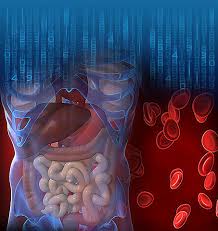While all the causes of leukemia are still not known, there are risks that have been linked to the development of various types of leukemia. There have been both environmental as well as genetic factors that have shown up as links to leukemia.
The type of leukemia a person has usually depends on the type of abnormal white blood cells that are being produced in the body. Leukemia produces abnormal or immature white blood cells in the bone marrow. At an early development of white blood cells, a blast is the immature form of white blood cells. This is the stage between the stem cell in the bone marrow and the mature blood. Blasts (immature blood cells) are found in limited numbers in the bone marrow of healthy people and not at all in the blood stream. People with leukemia may have high numbers of blasts in the bone marrow and even circulating throughout the circulatory system.
The different types of leukemia are grouped as acute or chronic. An acute leukemia usually produces immature white blood cells that are non-functioning. These cells rapidly reproduce and crowd out the healthy cells. A chronic leukemia produces abnormal blood cells that don't function as well as normal blood cells. These forms of leukemia are slower acting on the body than the acute forms of leukemia.
Acute myelogenous leukemia (AML) is most common in adults and causes the rapid development of immature white blood cells in the bone marrow crowding out normal cells and spreading these no-functioning cells throughout the body. This interferes in usual work of the normal blood cells. Chronic myelogenous leukemia (CML) causes an increased unregulated growth of myeloid cells in the bone marrow and an elevated amount of white blood cells in the blood. Severe anemia is a result of this overabundance of white cells.
Acute lymphocytic leukemia (ALL) is most common among children under the age of fifteen. In this leukemia the rapid multiplying of malignant immature white blood cells crowds out normal white cells. This type of leukemia responds well to treatment if it is diagnosed in time. In chronic lymphocytic leukemia (CLL) a defective white blood cell is produced in overabundance. This cell does not fight infection and crowds out the healthy cells. Often the chronic lymphocytic leukemia is only discovered after a blood test when the elevated white blood cell count is found.
Some of the risk factors that researchers have identified include high doses of radiation, long-term chemical exposure in the work place, cigarette smoking, and agricultural chemicals. High doses of radiation such as around the failed nuclear reactor at Chernobyl or military exposure during the nuclear detonations in the 1950's show a strong link to leukemia. Exposure to benzene, herbicides and pesticides have been linked to acute leukemia.
Chronic lymphocytic leukemia has been linked to exposure to agricultural chemicals as has exposure to Agent Orange. Cigarette smoking seems to have an important link to acute leukemia. This is probably due to the chemicals such as benzene, polonium-210 and polycyclic aromatic hydrocarbons. Certain chemotherapy drugs especially alkylating agents combined with ionizing radiation may produce leukemia. Some diseases caused by abnormal chromosomes may increase the risk of leukemia. Philadelphia chromosome is a specific chromosomal abnormality in which parts of two chromosomes swap places. This can lead to acute myelogenous leukemia.
For Further Reading,


